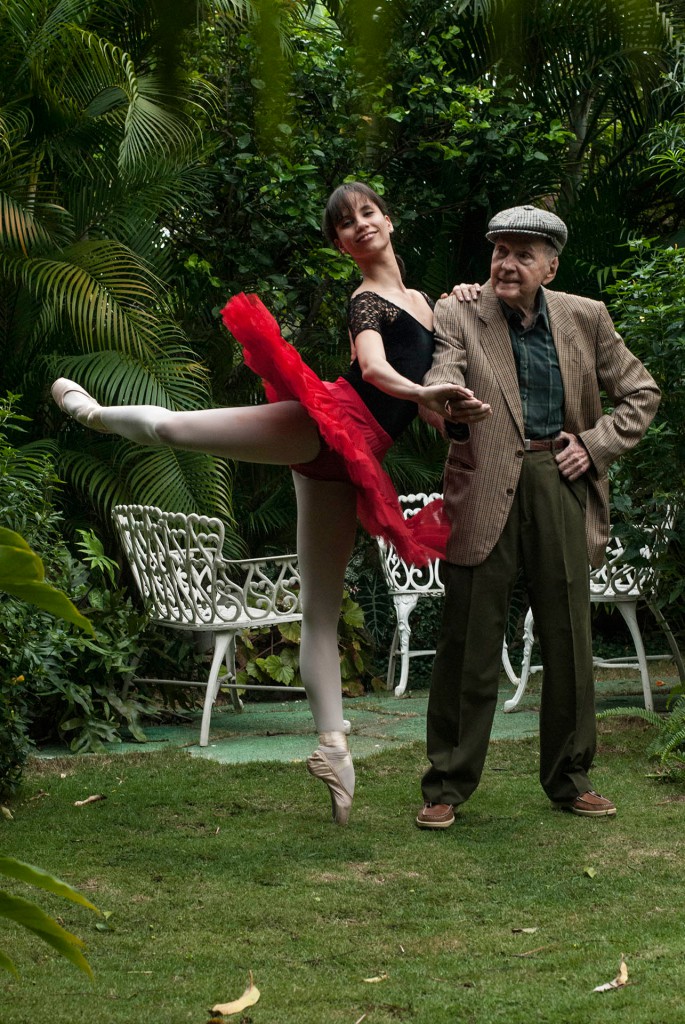
Fernando Alonso with more than 90 years old, he used to attend the National Ballet School, step by step, with the energy of the purest enthusiasm, with a singular sense of responsibility. He sometimes participated in the trainings, others, he practiced the classical pas de deux.
Were the students aware of the great privilege they had? Perhaps they were. Anyhow, every one treated him with great courtesy and respect. “I feel alive in this school – one day told me, few minutes before entering in the hall where a couple of young dancers were waiting for him-. Well, the fact is that I am alive. And, if I feel fine and my head is clear, I come to share the little I have learned all along these years.”
It was obviously not a little. That venerable man was one of the bastions of the dance in Cuba, main architect of the methodology in the teaching of ballet in this country, founder – together with Alicia Alonso- of our principal company. Leader of another important group: Camaguey’s Ballet…
He had received all the homage this nation gives to its artists, he had a great prestige worldwide…, but Fernando always assumed it with simplicity. “The everyday job is the most important thing. Do you want to know when I am happier? It is when I see a dancer performing well. Perhaps, those besides me do not notice that, but I feel a great proud, even more than when I used to dance, a million years ago.”
That day in the immense school on Prado Street, Fernando was rehearsing with two promising students the pas the deux of the third act from La bella durmiente. “These two students have talent – he whispered me-. I noticed that since I saw them class with the group. If they work hard, they could be first ballet dancers.”
He was not mistaken; the students were Grettel Morejon and Dani Hernandez who are today first figures in the Cuban National Ballet.
Those studious about ballet know that La bella duemiente is the quintessence itself of classicism. The lines are extended with majestic serenity: drawing is brilliant; the proud attitude. We demand control and elegance to the ballet dancer. It is not a play to dazzle just for technical virtuosity; admiration has to be won clean and with the control with style.
That was Fernando asking the two students to do. He was kind but firmly. “Do you know who you are now? You are prince and princess. It is important that you never forget it. You should dance with distinction, almost glacial. As if anything matters. The rest of the people are here just to watch you dance. Of course that you are not like that, I guess you are simple and sensitive kids, but when assuming a character you have to interiorize everything.”
During the adagio, he used to tell Dani: “It is now she the one that has to highlight. You will watch her with proud, showing the world how well she does it. So she will look perfect, you and me know you have to work a lot, but the audience does not have to notice it. You will lead her as if it is nothing. You will smile, but with distinction. The most radiant smile has to be hers. Don’t ever try to make her look opaque that is a sin some of the ballerinas commit nowadays. There will come the time when you will show your talent.”
Fernando Alonso was always aware of everything sitting at a chair and following the music with his foot. Corrections were precise, arguable from art, physics or the anatomy. “The slightest movement has a sense, although it is not a specific sense. In classic ballet, in dance, nothing is neither capricious nor at random.”
He insisted a lot on the fluency of chaining: “There is nothing worse in a sequence preparing the step that follows. When people dance something popular in a party, do they stop the dynamic of the dance to make a turn or a move? We don’t have to do it in the ballet either.”
Some days afterwards, at the Great Theater of Havana Grettel and Dani danced a pas de deux inspired full of nuances. Someone in the audience shouted: “We can notice Fernando’s hand in there!”
In the ground-floor box, the teacher smiled satisfied.